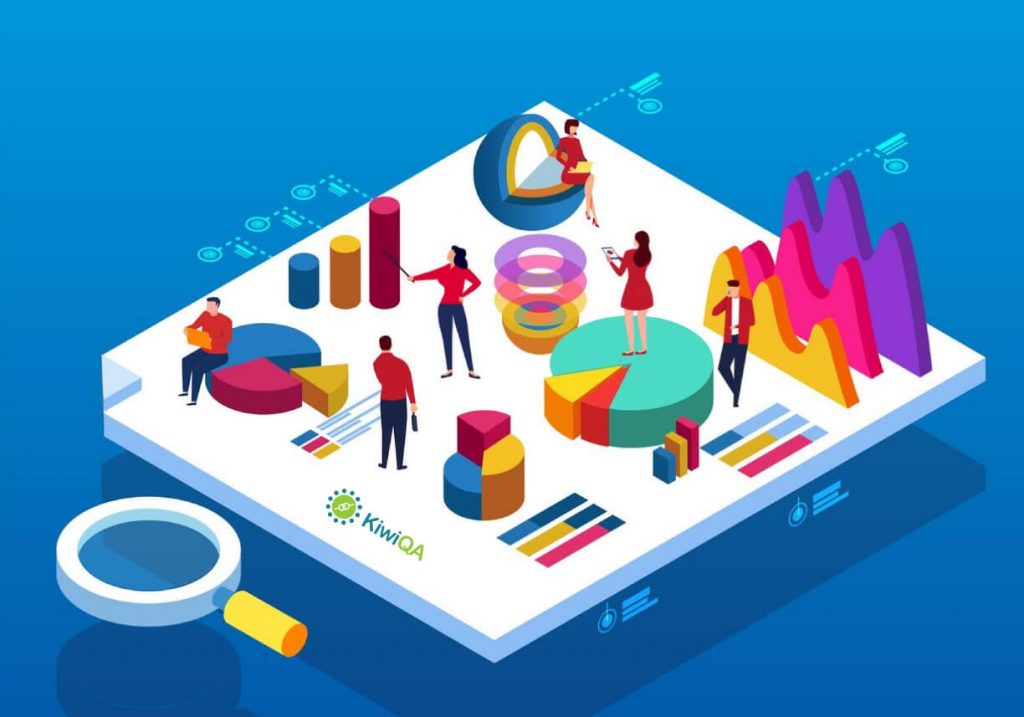The COVID-19 pandemic has resulted in a surge in the adoption of digital technologies, whether it is related to digital payments or cloud adoption by enterprises. Along with catalyzing the digital revolution, the pandemic also stressed upon the need for web accessibility so that tech-enabled products can address a larger part of the market.
As per a report[1] from the accessibility foundation, the web accessibility market size is a whopping $350 billion. Web accessibility has become more relevant than before. Hence, technology enablers (e.g. service providers, product enterprises, app developers, etc.) need to focus on accessibility testing more than ever before.
Enterprises that have web products with a razor-sharp focus on accessible web experiences can hugely benefit by addressing this underserved market. By partnering with an accessibility testing company helps in accelerating the process of web accessibility testing and gaining an upper edge over your competition.
The Web Content Accessibility Guidelines (WCAG)[2] outlined by W3C are organized by four key principles termed POUR – Perceivable, Operable, Understandable, and Robust. Now that you are aware of the criticalities of accessibility testing, it’s time to unravel the facets of accessibility testing.
What is Web Accessibility Testing
Web accessibility testing is a form of testing methodology that ensures that the web app (or website) adheres to the POUR principles specified by the W3C. The app should be accessible for people with disabilities such as hearing issues, blindness, motor impairments, etc.
Web Accessibility Testing is not limited to web apps (or mobile apps) but it covers every product that falls under the umbrella of ‘digital accessibility’.
Also Read: Accessibility Testing Best Practices
Here are the four major principles outlined by W3C under Web Content Accessibility Guidelines:
Perceivable
Information that is presented to the end-user has to be created in a manner that they can perceive the same.
Operable
Navigation through the UI should be operable and accessible. Keyboard strokes should play a role in easing the navigation on the web page.
Understandable
The content must be designed in a manner that it is easily understandable. Color-driven instructions should be used so that incorrectness of any sort is easily highlighted on the page.
For example – highlights should be used when the user enters an incorrect password or when a mandatory field is not filled by the user. Assistive technology should be used effectively so that the content is more understandable.
Robust
Robustness of the content is of prime importance when you are designing a product for increased accessibility. The content must be accessible for different user agents.
The W3C consortium has come up with different complexity[3] levels – A, AA, & AAA and teams (i.e. planning, development, and testing) should plan their respective activities in accordance with those levels. Given the importance of accessibility testing, it is imperative to associate with a company like KiWiQA that has immense expertise in providing accessibility testing services. Their team follows the best practices of accessibility testing when testing any web product with respect to adherence to web accessibility.
Long-term benefits of Web Accessibility Testing
Apart from accessibility for the differently-abled, here are some of the other benefits of web accessibility testing:
- A number of countries have compliance rules related to web accessibility for digital mediums. Accessibility testing is instrumental in meeting these compliances.
- Improved accessibility eases the application’s navigation, UI appearance, and more. This helps in improving the overall revenue.
- Websites (or web apps) built with web accessibility in mind perform better in terms of search rankings. Google has set guidelines related to web accessibility[4] and website (or app) developers are recommended to adhere to those guidelines to improve rankings.
Also Read: Everything You Should Know About Software Accessibility Testing
Types of Web Accessibility Testing
Like other forms of testing, accessibility testing also falls into two major buckets:
Manual Web Accessibility Testing
This is the easiest way to test the accessibility of the keyboard. Manual web accessibility testing is performed by pressing the TAB key on the keyboard. Doing so highlights every hyperlink present on the page. With this, the user would be able to navigate to the appropriate link with ease.
Popular screen-readers like TalkBack, VoiceOver, JAWS, etc. are widely used in web accessibility testing. These tools read out what is present in the application, thereby making it easy for people with visual impairments to use the website (or web app).
Automated Web Accessibility Testing
Chrome and Firefox browsers have a number of plugins (or add-ons) catering to web accessibility testing. Web Accessibility Toolbar, Axe for Chrome (and Firefox), JAWS Inspect, and Accessibility Inspector are some of the prominent tools that aid in accessibility testing.
Selecting the best-suited tool is important for expediting the accessibility testing process. Accessibility testing company like KiWiQA has helped a number of enterprises scale up by making their websites (and app) more accessible.
Let’s make websites more accessible
A significant percent of the world’s population[5] has at least some form of accessibility. Companies have to leverage the advantages offered by web accessibility testing to improve the accessibility quotient of websites (or web applications).
With increased mobile and internet penetration, it is essential to address the needs of the specially-abled population. This is where web accessibility testing can be instrumental in addressing their technological needs. Given the cut-throat competition in the software industry, it is imperative to partner with companies like KiWiQA that have experience and expertise in providing a range of accessibility testing services.
It’s time enterprises consider web accessibility testing as an integral part of their testing strategy as it has long-term humane and business benefits!
